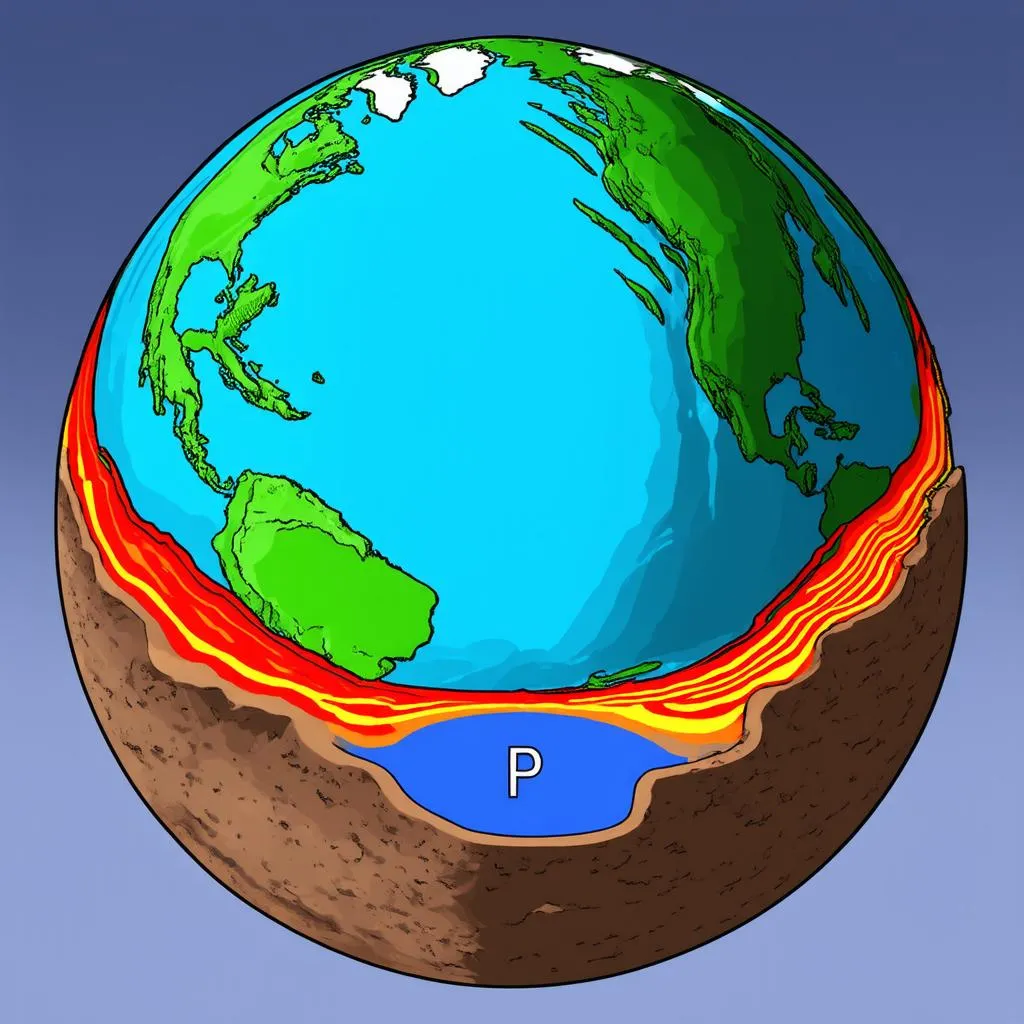Have you ever felt the ground shake beneath your feet? It’s an unnerving experience, reminding us of the immense power hidden within our planet. This shaking, as you might know, is caused by earthquakes, and at the heart of these seismic events are waves that ripple through the Earth. But have you ever wondered, What Seismic Wave Travels The Fastest?
The Need for Speed: Introducing Seismic Waves
Before we crown the speediest wave, let’s take a step back and understand what we’re dealing with. Seismic waves are vibrations that travel through the Earth, carrying energy released during earthquakes. Imagine tossing a pebble into a still pond – the ripples spreading outwards are analogous to seismic waves.
Now, imagine those ripples traveling at different speeds, each carrying unique information about the earthquake’s origin and the Earth’s interior. That’s precisely what happens with seismic waves!
P-Waves: The Speedy Champions
And the award for the fastest seismic wave goes to… P-waves! Short for primary waves, these speedsters are the first to arrive at seismic recording stations after an earthquake. They’re like the Usain Bolts of the seismic world, zipping through the Earth’s crust, mantle, and even the core.
But what makes P-waves so quick? It’s all in their motion. P-waves are compressional waves, meaning they travel by squeezing and stretching the matter they pass through, similar to how sound waves travel through air. This back-and-forth motion allows them to navigate through solids, liquids, and even gases, making them incredibly versatile travelers.
The Supporting Cast: Other Seismic Waves
While P-waves bask in the limelight, other seismic waves play crucial roles in painting a complete picture of an earthquake.
S-Waves: The Slower Siblings
Next in line are the S-waves, or secondary waves. These waves are a bit more leisurely than their P-wave counterparts. S-waves are shear waves, meaning they move material perpendicular to their direction of travel. Think of shaking a rope – that up-and-down or side-to-side movement is akin to how S-waves propagate.
Surface Waves: The Ground Shakers
Last but not least, we have surface waves. As their name suggests, these waves travel along the Earth’s surface, causing the most noticeable shaking we experience during earthquakes. Surface waves are slower than both P and S-waves but pack a powerful punch when it comes to causing damage.
FAQs: Unraveling the Mysteries of Seismic Waves
- Why is it important to know which seismic wave travels fastest? Knowing the speed of different seismic waves helps scientists pinpoint the earthquake’s epicenter and understand the Earth’s internal structure. It’s like using a stopwatch to figure out how far away a lightning strike occurred based on the time difference between the flash and the sound of thunder.
- Can seismic waves travel through water? While P-waves can travel through solids, liquids, and gases, S-waves cannot travel through liquids. This characteristic difference helps scientists determine the composition of the Earth’s interior.
- Where can I learn more about seismic waves and earthquakes? To delve deeper into the fascinating world of earthquakes and seismic waves, visit travelcar.edu.vn for more insightful articles and resources.
Embracing the Earth’s Tremors
Understanding the different types of seismic waves, especially the speed demon P-wave, allows us to appreciate the intricate workings of our planet. It’s a reminder that even beneath our feet, a world of dynamic forces is constantly shaping and reshaping our world.
Next time you feel the ground shake, remember the speedy P-waves racing ahead, carrying vital information about the Earth’s hidden tremors. And for more captivating insights into the world around us, be sure to explore the wealth of knowledge at TRAVELCAR.edu.vn.
 P-wave traveling through Earth's layers
P-wave traveling through Earth's layers
 Earthquake seismic waves radiating from epicenter
Earthquake seismic waves radiating from epicenter
